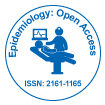Paratuberculosis Molecular Epidemiology and Genotyping Techniques
Received Date: Jul 26, 2022 / Published Date: Aug 24, 2022
Abstract
The underlying cause of Johne's disease (JD), which primarily affects ruminants and is characterised by chronic diarrhoea and emaciation, is Mycobacterium avium subsp. paratuberculosis (MAP). Johne's illness is extremely widespread around the world and causes significant economic losses due to diminished production. The study of population genetics, pathogenesis, and molecular epidemiology, including disease surveillance and outbreak research, could all benefit from the genotyping of the involved pathogen. Primarily, scientists have presummated the existence of two distinct MAP strains linked to the animal host species (cattle and sheep). In contrast, genetic testing using genetic marker including insertion elements, repetitive sequences, and single nucleotide polymorphisms is now the major method used for MAP characterisation. This project intends to give a general overview of the MAP molecular epidemiology's future prospects are discussed in light of the developments in molecular biological tools used for MAP typing over the last two decades, how these techniques have been applied to answer intriguing epidemiological questions, and the potential uses of these techniques in the future.
Keywords: Emaciation; Paratuberculosis; Mycobacterium; ruminant
Citation: Michael F (2022) Paratuberculosis Molecular Epidemiology and Genotyping Techniques. Epidemiol Sci, 12: 456. Doi: 10.4172/2161-1165.1000456
Copyright: © 2022 Michael F. This is an open-access article distributed under the terms of the Creative Commons Attribution License, which permits unrestricted use, distribution, and reproduction in any medium, provided the original author and source are credited.
Share This Article
Recommended Journals
Open Access Journals
Article Tools
Article Usage
- Total views: 1113
- [From(publication date): 0-2022 - Mar 31, 2025]
- Breakdown by view type
- HTML page views: 785
- PDF downloads: 328
